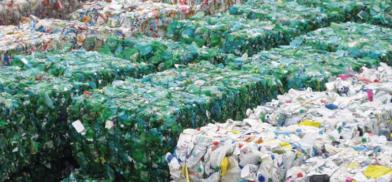Waste management in Thimphu: A lot to be desired
Waste continues to be a growing problem in Bhutan, especially in the bigger population centres

Waste continues to be a growing problem in Bhutan, especially in the bigger population centres. One year after the Waste Management Flagship Programme (WMFP) was launched (June 2, 2019), what’s being done? What has the programme achieved?
Not a lot. The Phase-I of the programme, which focuses on Thimphu, has just about begun—implementation of three coloured bins and comprehensive waste management system from source to disposal sites in Thimphu—is expected to take until 2021.
The National Environment Commission’s Waste Management Division (WMD) in collaboration with Thimphu Thromde and Dzongkhag Administration is constructing drop-off centres—disposal sites in designated areas.
The first four are in Semtokha, Lungtenphu, Changzamtog, and Babesa. Including the existing drop-off centre at Kelki Higher Secondary School, there would be 11 drop-off centres by the end of 2021.
The programme’s priority is also to construct waste collection facilities in suburban and far-flung parts of Thimphu. By September this year, the construction of 20 waste collection facilities is expected to be constructed.
Material recovery facilities (MRF)—manned segregation of waste and compact of waste and compost designs— will also be constructed.
What is different about WMFP?
The general observation is that the Bhutanese are irresponsible and careless with waste, which led to the failure of the past management measures and programmes.
Thinley Dorji, chief of WMD, said that in the past the implementation of waste management strategies was sporadic and disjointed. For example, the thromde, waste division, and dzongkhag administration formulated their own waste management measures, which became costly.
WMFP, in contrast, embraces comprehensive waste management strategies involving the entire value chain from source to disposal in the 20 dzongkhags. The programme also consolidates all the waste management-related plans, projects and activities across the country by involving all the relevant stakeholders.
The waste management, henceforth, would be incorporated into Annual Performance Agreement and Individual Work Plan.
Thinley Dorji said that waste was a crosscutting issue and so every agency must act responsibly.
The programme’s aim is to achieve zero-waste in the country, which means 80 percent waste going to the landfill is reduced to less than 15 percent by the year 2030.
Every household, office, and institute will be provided with three bins on a cost-sharing basis. Red for hazardous, green for wet, and blue dry waste.
In urban areas, there will be common residential bins and drop-off centres. Common residential bins are three colour-coded trash bins for the tenants to dispose of their waste if they miss the collection timing.
In the rural areas, waste collection facility and PSSF (primary collection, storage, segregation and sorting facility) will be implemented.
Recovery and treatment
Treatment of waste will also involve composting. Recovery of waste will come from MRF, refuse-derived fuel, construction and demolition plants, and e-waste dismantling centres. After recovery and re-using every bit of waste, the residue would be dumped in landfill or incinerated.
Thinley Dorji said that the main challenge facing waste management was sustainability.
He said that unlike in the past, WMFP was a nationwide programme. Waste management fees would be introduced later which would be used to pay waste service providers and low-interest loan for waste management businesses, among others.
According to a survey, 73.4 percent of households were willing to pay if there were good waste management service.
Bhutan produces 172.16 tonnes of waste every day, which is 0.23 kg per capita.
https://kuenselonline.com/what-could-wmfp-bring-in-thimphu/
Данный сервис осуществляет поиск по номеру телефона и предоставляет детали из государственных реестров .
С его помощью можно пробить данные через Telegram-бот , используя автомобильный номер в качестве ключевого параметра.
<a href="https://msk1.xyz/">бот пробив</a>
Технология "Глаз Бога" автоматически собирает информацию из открытых баз , формируя структурированные данные .
Клиенты бота получают 5 бесплатных проверок для проверки эффективности.
Решение постоянно совершенствуется , сохраняя скорость обработки в соответствии с стандартами безопасности .
У нас вы найдёте редкие монеты из исторических периодов, а также антикварные предметы .
Просмотрите архив с характеристиками и высококачественными фото , чтобы сделать выбор .
<a href="https://dimonvideo.ru/usernews/catalog_62/392395">драгоценные металлы</a>
Для новичков или эксперт, наши статьи и гайды помогут углубить экспертизу.
Воспользуйтесь шансом приобрести лимитированные артефакты с гарантией подлинности .
Присоединяйтесь сообщества энтузиастов и следите аукционов в мире нумизматики.
Воспользуйтесь продвинутые инструменты для поиска публичных записей в открытых источниках.
Узнайте место работы или активность через автоматизированный скан с гарантией точности .
<a href="https://gglazz.pro/">глаз бога бот тг</a>
Бот работает в рамках закона , обрабатывая открытые данные .
Закажите расширенный отчет с геолокационными метками и списком связей.
Попробуйте проверенному решению для исследований — результаты вас удивят !
Импортные сборы составляют в диапазоне 15–20%, в зависимости от категории товаров — например, сельхозпродукты облагаются по максимальной ставке.
Чтобы сократить сроки используют серые каналы доставки , которые избегают бюрократических задержек, но связаны с повышенными рисками .
<a href="https://www.panram.ru/partners/news/oem-i-odm-proizvodstvo-v-kitae-otlichiya-i-preimushchestva/">OEM и ODM производство в Китае</a>
При официальном оформлении требуется предоставить паспорта на товар и декларации , особенно для сложных грузов .
Сроки доставки варьируются от одной недели до двух недель , в зависимости от удалённости пункта назначения и эффективности таможни .
Общая цена включает логистику , таможенные платежи и комиссии за оформление , что влияет на рентабельность поставок.
Воспользуйтесь продвинутые инструменты для анализа публичных записей в соцсетях .
Выясните контактные данные или интересы через систему мониторинга с гарантией точности .
<a href="https://t.me/GlazBogaFind">глаз бога официальный сайт</a>
Бот работает в рамках закона , используя только открытые данные .
Получите расширенный отчет с историей аккаунтов и графиками активности .
Доверьтесь надежному помощнику для digital-расследований — результаты вас удивят !
Whether you’re into expert articles to daily updates , there’s something for everyone .
Keep updated with regularly updated information crafted to inspire while also support visitors.
Our platform offers an intuitive experience easily access the information right away.
Connect with of thousands of users and appreciate our high-quality content regularly .
Dive in immediately and discover wealth of knowledge this platform has to offer .
https://viral-hep.org
Our company provides tailored solutions for businesses of any scale.
We take care of all transportation processes to make your workflow uninterrupted.
<a href="https://asia-cargo.site/">air delivery of goods from china</a>
With regular shipments, we guarantee timely dispatch of your consignments.
Clients trust our skilled team and affordable rates.
Choosing us means assurance in every shipment.
It is created to support you with various topics.
You will find clear explanations and real examples.
The content is constantly improved to stay current.
https://ibcl.us
It’s a great resource for research.
Anyone can benefit from the materials here.
Begin checking out the site right away.
Они служат для мотивации создателей.
Любой пользователь может отправлять звёзды каналам.
<a href="https://stars-bot.pro/">где дешево купить звезды</a>
Звёзды переводятся в финансовое вознаграждение.
Это понятный способ оценить труд.
Попробуйте опцию уже прямо сейчас.









Post a Comment